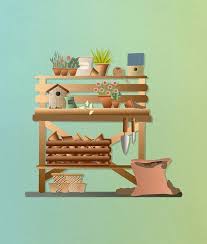The Role of Calligraphy in Living Space Design: A Blend of Art, Culture, and Serenity

Calligraphy, often regarded as the art of beautiful writing, is an ancient practice that has played a significant role in various cultures, particularly in East Asia. In Chinese, Japanese, and Korean traditions, calligraphy is not just a method of writing but a form of artistic expression and cultural heritage. Over time, it has found its way into interior design, offering a blend of elegance, spirituality, and meaning to living spaces. As more people look for ways to personalize their homes with unique and meaningful decor, calligraphy has emerged as a valuable tool in creating environments that are not only visually appealing but also deeply connected to cultural and personal values.
This article delves into the role of calligraphy in living space design, exploring its historical significance, its impact on interior aesthetics, and how it can transform a living space into a place of beauty, tranquility, and inspiration.
1. The History and Cultural Significance of Calligraphy
Calligraphy has a rich history that dates back thousands of years. In ancient China, the art of writing was closely linked to spirituality, intellectual pursuits, and personal expression. The earliest forms of Chinese calligraphy were developed alongside the invention of writing, with calligraphers using brushes, ink, and paper to convey not only words but also the flow of energy and emotion.
Over the centuries, calligraphy became a revered art form, with each stroke of the brush symbolizing a deep connection between the artist and their craft. The different styles of calligraphy, such as regular script (kaishu), running script (xingshu), seal script (zhuanshu), and cursive script (caoshu), all hold their own unique aesthetic qualities and evoke different emotions and moods.
In Japan and Korea, calligraphy, or shodo and seoye, respectively, also holds immense cultural significance. In these countries, the practice of writing has been influenced by Buddhism, Zen philosophies, and Confucianism, and it continues to be an important part of artistic and cultural life.
As an art form, calligraphy is not merely a technique for writing; it is an embodiment of the writer’s inner thoughts, emotions, and personality. Each stroke is meant to reflect the rhythm of the writer’s mind and the flow of life itself. This connection between thought, emotion, and action is what makes calligraphy so powerful when incorporated into interior design.
2. Calligraphy as a Design Element in Living Spaces
In recent years, calligraphy has been embraced as a design element in contemporary interior decoration. Homeowners and designers have realized that incorporating calligraphy into living spaces adds not only beauty but also layers of meaning, depth, and cultural significance. Whether as a wall hanging, on furniture, or in accessories, calligraphy has the ability to transform a room by infusing it with a sense of history, serenity, and artistic flair.
Here are some of the key ways calligraphy can be used in interior design:
2.1 Calligraphy as Wall Art
One of the most common ways to incorporate calligraphy into living spaces is through wall art. Calligraphy can be framed as a piece of art or painted directly onto the walls, creating a stunning focal point. The use of Chinese or Japanese characters or quotes from famous poets, philosophers, or spiritual leaders can imbue a room with meaning and significance. These artistic strokes can serve as visual expressions of peace, wisdom, or love.
- Inspirational Quotes: Calligraphy is often used to display meaningful quotes or verses that resonate with the inhabitants of a home. Phrases like “peace begins within” or “live with intention” are powerful messages that can motivate and uplift anyone who reads them. These phrases, beautifully written in flowing script, can evoke a sense of tranquility and mindfulness.
- Cultural and Spiritual Elements: Chinese calligraphy often features words with deep philosophical meaning, such as fu (luck), shou (longevity), and ai (love). These words can be integrated into the design of a living space to bring in elements of good fortune, health, and harmony. Similarly, Zen-inspired calligraphy, with its minimalistic yet profound strokes, can create a calming atmosphere in a home.
2.2 Calligraphy on Furniture and Accessories
Calligraphy can also be applied to furniture pieces and accessories, adding a unique touch of artistry to everyday objects. From lacquered furniture to decorative vases, calligraphy can be incorporated to elevate the visual impact of these pieces.
- Lacquered Furniture: In traditional Chinese and Japanese design, lacquered furniture often features calligraphy as part of its decorative motifs. A table or cabinet adorned with flowing calligraphic strokes can add sophistication and elegance to a space, while also infusing it with cultural richness.
- Decorative Items: Items such as vases, plates, lamps, and bowls can feature calligraphic designs or short poems. The beauty of these calligraphic touches is that they can complement any style, from modern minimalist to more traditional or eclectic interiors.
2.3 Calligraphy as a Symbol of Serenity and Balance
In many Asian cultures, calligraphy is seen as a meditative practice that cultivates patience, concentration, and mindfulness. This spiritual connection can be extended to interior design, where the act of writing or displaying calligraphy can promote a sense of calm and balance in a home.
Incorporating calligraphy into spaces such as the study, meditation room, or reading nook helps foster an environment that encourages reflection and introspection. The flowing brushstrokes of calligraphy, with their natural rhythm and grace, can bring a sense of order and tranquility to a chaotic world. These spaces become more than just places to relax; they become havens for personal growth and spiritual well-being.
3. Calligraphy in Different Design Styles
Calligraphy’s versatility makes it suitable for various design styles, from traditional to modern, from minimalist to eclectic. Depending on the chosen script and composition, calligraphy can seamlessly blend with different interior design themes.
3.1 Traditional Asian Interiors
In traditional Asian homes, particularly those in China, Japan, and Korea, calligraphy plays a central role in the overall aesthetic. In these spaces, calligraphy is often combined with other traditional elements like silk screens, lacquer furniture, and wooden carvings to create a harmonious atmosphere.
For instance, in Chinese feng shui design, calligraphy is often used to enhance the flow of positive energy (qi). Calligraphic representations of symbols for prosperity, health, and happiness are commonly displayed in various areas of the home to attract good fortune and balance.
3.2 Contemporary and Minimalist Interiors
In modern homes, calligraphy can be used to introduce a touch of elegance and sophistication to minimalist designs. Simple, bold strokes of black ink against white walls or furniture can create striking contrasts, adding both visual interest and a sense of balance. In these spaces, the calligraphy itself becomes the artwork, drawing attention without overwhelming the room.
Calligraphy in contemporary interiors often focuses on abstract designs or single words, allowing for a clean, uncluttered look that complements modern architecture and furniture.
3.3 Eclectic and Bohemian Spaces
For more eclectic or bohemian-style interiors, calligraphy can be incorporated in more free-spirited and creative ways. Here, you might see vibrant calligraphic pieces paired with rich textures, colorful fabrics, and a mix of antique and modern elements. The calligraphy in these settings often reflects personal expression, with hand-painted verses or abstract calligraphy that fits the energetic and individualized nature of the space.
4. Calligraphy and the Creation of Meaningful Spaces
One of the most profound ways calligraphy can influence interior design is by giving meaning to the spaces we inhabit. In many cultures, the written word carries deep philosophical, spiritual, or emotional significance, and calligraphy acts as a vehicle for expressing these values. A home that is adorned with calligraphic art becomes more than just a physical structure—it becomes a reflection of the homeowner’s beliefs, aspirations, and cultural identity.
For example, the inclusion of traditional Chinese calligraphy in a home can evoke a sense of connection to one’s heritage, while the use of Zen-inspired Japanese calligraphy may invite a spirit of mindfulness and peace. In both cases, calligraphy acts as a bridge between the physical world and the intangible, providing a sense of depth and purpose that enhances the living experience.
5. Conclusion
Calligraphy, as an art form, has the power to transform a living space by infusing it with beauty, serenity, and meaning. Whether incorporated as wall art, used on furniture, or featured in decorative items, calligraphy brings a sense of cultural richness and emotional depth to the home. It is not just about writing words—it’s about conveying emotions, spirituality, and history through the graceful strokes of the brush.
As interior design continues to evolve, calligraphy remains a timeless tool for creating spaces that are not only visually stunning but also deeply meaningful. By integrating calligraphy into our homes, we invite both the history of the art form and its modern-day applications into our lives, enriching the spaces we inhabit and the way we experience them.

